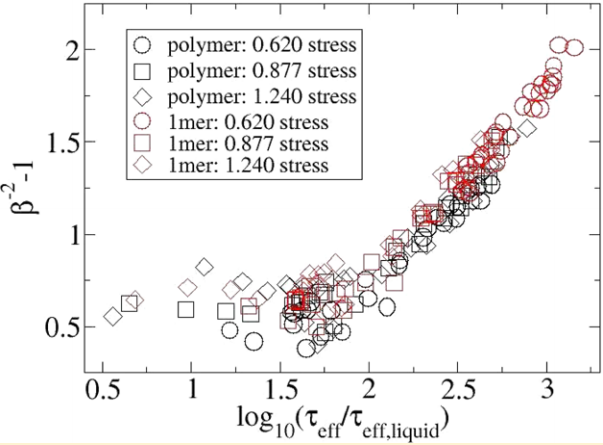Abstract
The state of a glassy material can be altered considerably through the application of stress. The origins of this effect, and its relation to molecular mobility, are not well understood. Recent experimental, theoretical, and simulation studies have examined molecular mobility under deformation for different classes of materials, ranging from colloidal suspensions to polymeric glasses. While such studies indicate that dynamic heterogeneity, one of the hallmarks of glasses, decreases with the onset of flow, less is known about the effects of stress on polymer nanocomposites, whose mechanical and rheological properties can be significantly different from those of pure polymers. In this work, molecular simulations of multistep creep deformations and constant strain rate tensile deformations are used to examine dynamic heterogeneity in entangled, rod-containing nanocomposites. It is found that polymer nanocomposites, like polymers, experience reduced dynamic heterogeneity due to deformation, but some intrinsic heterogeneity of nonglassy origin persists. A connection between the segmental relaxation time and dynamic heterogeneity, suggested on the basis of an activated barrier-hopping model that includes local density fluctuations, is found to describe pure polymer behavior over a wide range of applied stresses, material compliances, and deformation histories. Additionally, segment displacements during postyield deformation are found to agree with a simple diffusional model across 2 orders of magnitude in strain rate for both pure polymer and nanocomposite systems.
